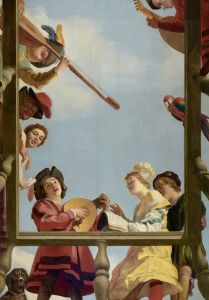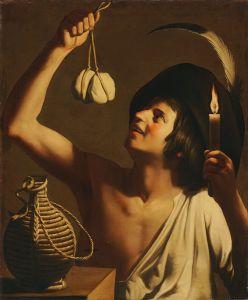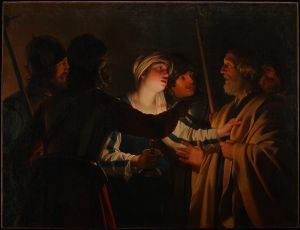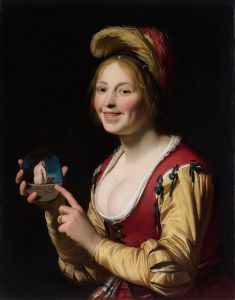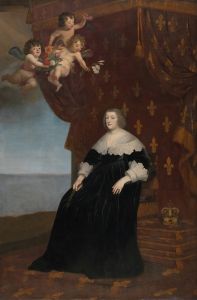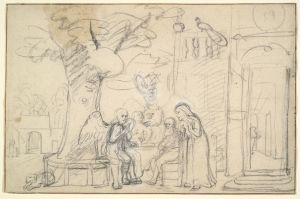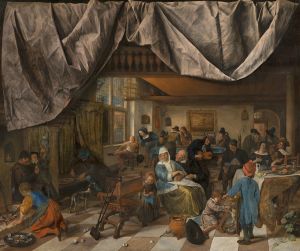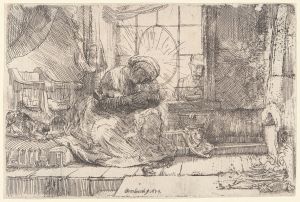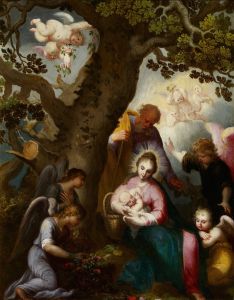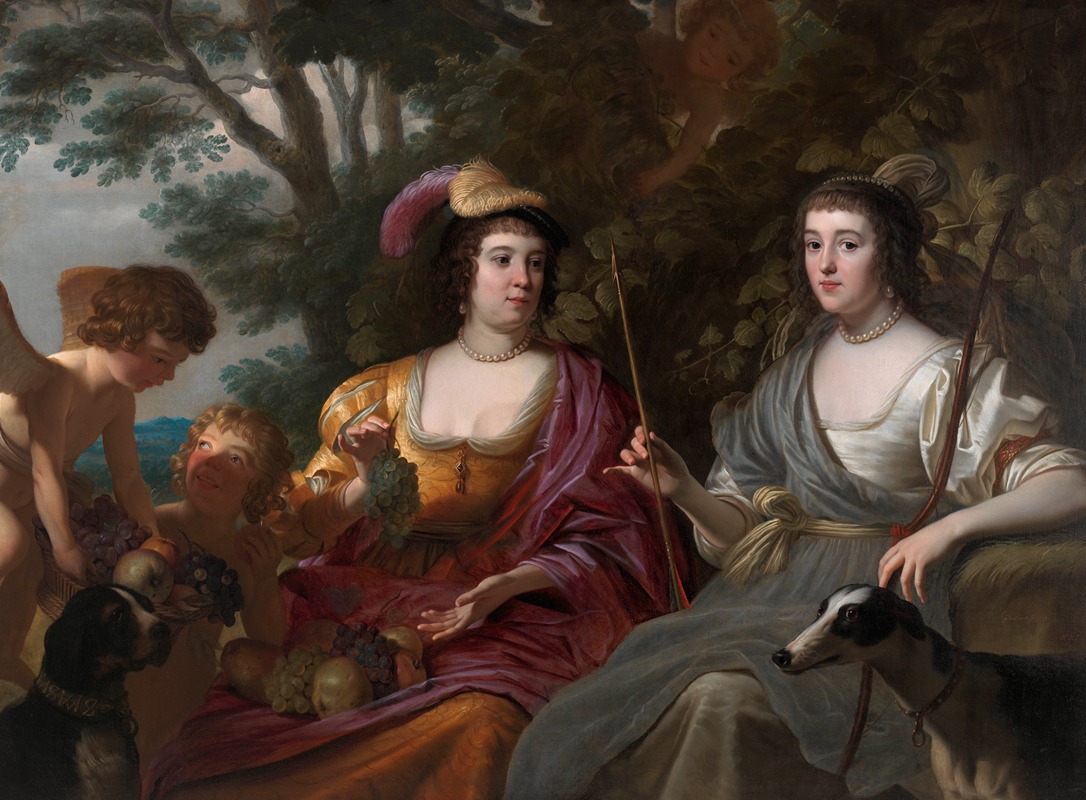
Double Portrait of Amalia van Solms and Charlotte de La Trémoïlle
A hand-painted replica of Gerard van Honthorst’s masterpiece Double Portrait of Amalia van Solms and Charlotte de La Trémoïlle, meticulously crafted by professional artists to capture the true essence of the original. Each piece is created with museum-quality canvas and rare mineral pigments, carefully painted by experienced artists with delicate brushstrokes and rich, layered colors to perfectly recreate the texture of the original artwork. Unlike machine-printed reproductions, this hand-painted version brings the painting to life, infused with the artist’s emotions and skill in every stroke. Whether for personal collection or home decoration, it instantly elevates the artistic atmosphere of any space.
The "Double Portrait of Amalia van Solms and Charlotte de La Trémoïlle" is a painting created by the Dutch Golden Age artist Gerard van Honthorst. This artwork is believed to have been completed in the early 17th century, during a period when van Honthorst was highly regarded for his skill in portraiture and his ability to capture the elegance and status of his sitters. The painting depicts two prominent women of the time: Amalia van Solms and Charlotte de La Trémoïlle.
Amalia van Solms (1602–1675) was a significant figure in European aristocracy and politics. She was the wife of Frederick Henry, Prince of Orange, and played an influential role in the Dutch Republic as a political advisor and patron of the arts. Her marriage to Frederick Henry elevated her status, and she became a central figure in the court at The Hague. Amalia was known for her intelligence, political acumen, and dedication to promoting the House of Orange.
Charlotte de La Trémoïlle (1599–1664) was a French noblewoman who became the Countess of Derby through her marriage to James Stanley, 7th Earl of Derby. She was a member of the prominent La Trémoïlle family and was known for her loyalty to the Royalist cause during the English Civil War. Charlotte is remembered for her courage and leadership, particularly during the defense of Lathom House, a key Royalist stronghold.
The double portrait by van Honthorst captures the close relationship between these two women, who were connected through familial and political ties. The painting reflects the artist's mastery of light and composition, as well as his ability to convey the personalities and social standing of his subjects. Both women are depicted in elegant attire, emphasizing their noble status and the cultural sophistication of the period.
Gerard van Honthorst (1592–1656) was a prominent Dutch painter, known for his work in the Caravaggisti style, which was influenced by the dramatic use of light and shadow pioneered by the Italian artist Caravaggio. Van Honthorst gained international recognition for his portraits and genre scenes, and he worked for various European courts, including those of the Netherlands, England, and Denmark.
The "Double Portrait of Amalia van Solms and Charlotte de La Trémoïlle" is an example of van Honthorst's ability to combine artistic skill with the demands of courtly representation. The painting serves as a testament to the interconnectedness of European aristocratic families and the role of art in reinforcing their status and alliances. The current location of the painting is not widely documented, and further details about its provenance remain limited.






